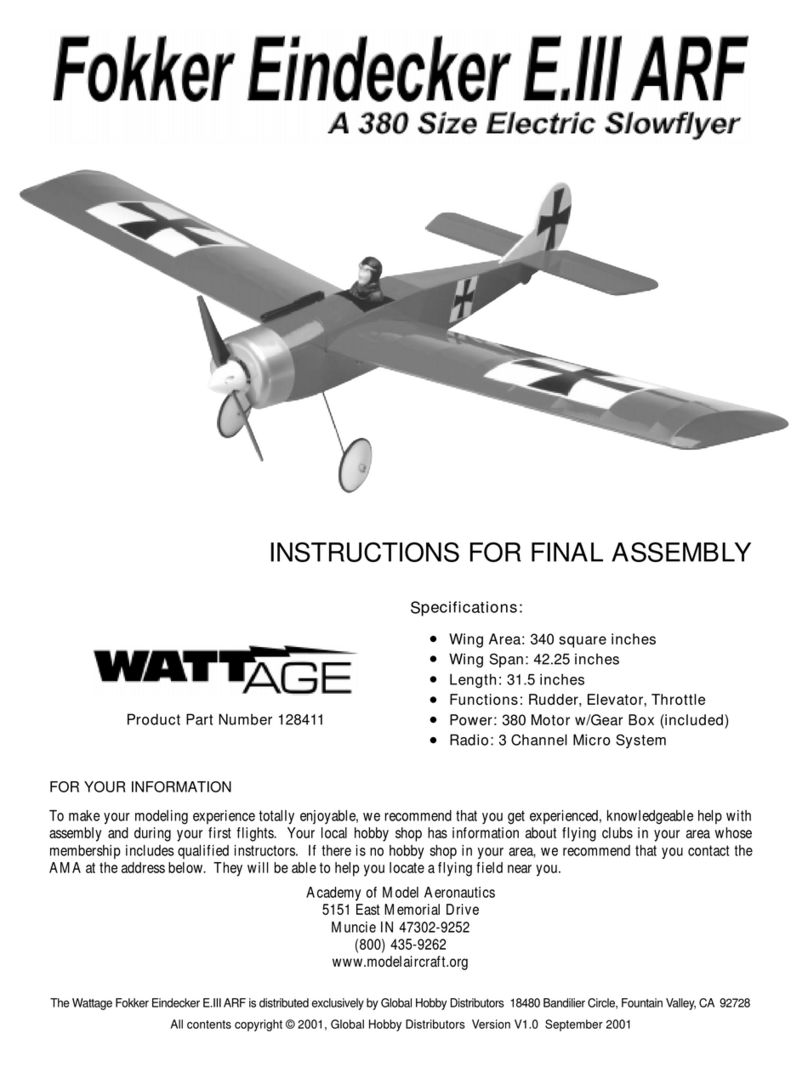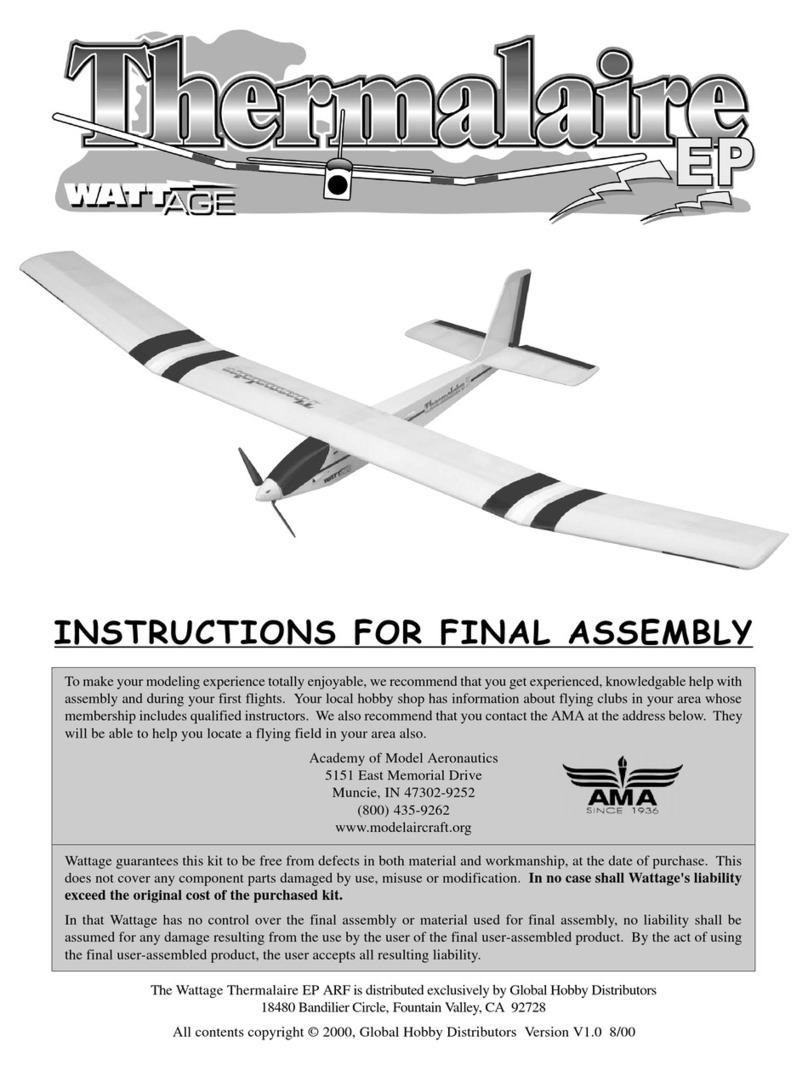
Lanier R/C Sukhoi SU 31M Instructions
WARNING! THIS IS NOT A TOY!
THIS IS NOT A BEGINNERS
AIRPLANE
This R/C kit and the model you will build
from it is not a toy! It is capable of
serious bodily harm and property damage.
It is your responsibility, and yours alone -
to build this kit correctly, properly install all
R/C. components and flying gear (engine,
tank, radio, pushrods, etc. and to test the
model and fly it only with experienced,
competent help, using common sense and in
accordance with all safety standards as set
forth in the Academy of Model Aeronautics
Safety Code. It is suggested that you join the
AMA and become properly insured before
attempting to fly this model. If you are just
starting R/C modeling, consult your local
hobby dealer or write to the Academy of
Model Aeronautics to find an experienced
instructor in your area.
Any action brought forth against the company,
based on the breach of the contract of sale to the
buyer, or on any alleged warranty thereunder,
must be brought within one year of the date of
such sale, or there after be barred. This one year
limitation is imposed by agreement of the parties
as permitted by the laws of the state of Georgia.
Write to : Academy of Model Aeronautics,
5151 Memorial Dr, Muncie, IN 47302
LIMITED WARRANTY
Lanier R/C is proud of the care and attention that
goes into the manufacture of parts for its model
kits. The company warrants that for a period of
30 days, it will replace, at the buyers request, any
parts or material shown to the company's
satisfaction to have been defective in
workmanship or material at the time of purchase.
No other warranty of any kind, expressed or
implied, is made with respect to the merchandise
sold by the company. The buyer acknowledges
and understands that he is purchasing only a
component kit from which the buyer will himself
construct a finished flying model airplane. The
company is neither the manufacturer of such a
flying model airplane, nor a seller of it. The buyer
hereby assumes the risk and all liability for
personal or property damage or injury arising out
of the buyers use of the components or the
finished flying model airplane, whenever any such
damage or injury shall occur.
37% Sukhoi SU 31M
1





























